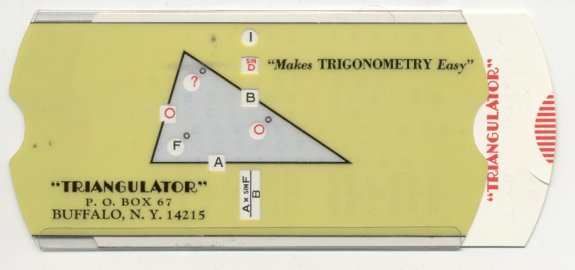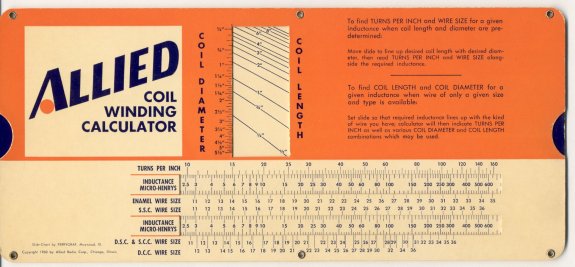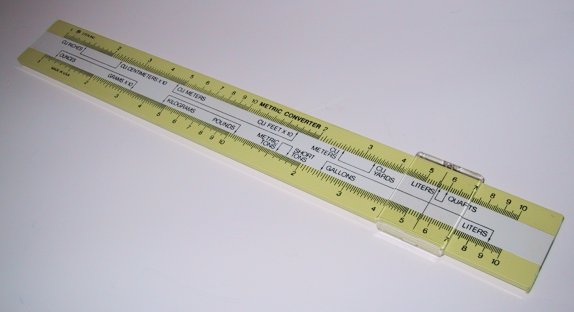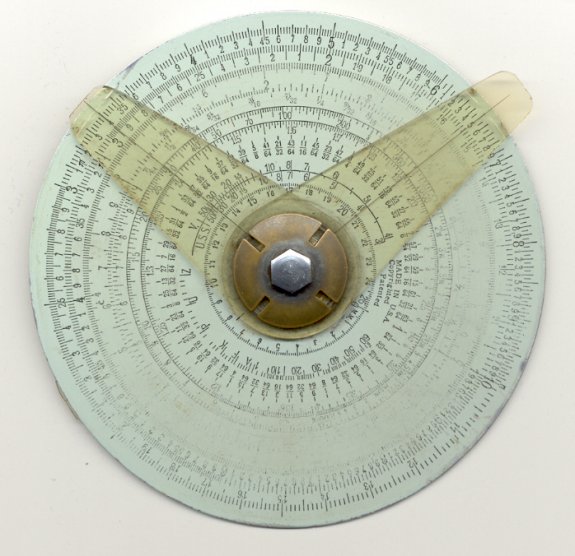- The Army Corps of Engineers turned off Niagara Falls in 1969. It was surprisingly easy to do.
- One of the reasons Americans got so fat starting about 1980 may be the explosion in the use of vegetable oils from about that time. It’s not simply solvents left over from seed-oil extraction, nor the estrogen-mimicking properties of soybean products, including oil. It’s a subtle matter involving the balance of two chemicals that allow our mitochondria to do their job. This piece is long and in places quite technical, but it may be the most important article on health I’ve seen in the last several years.
- A Harvard study suggests that moderate coffee drinking correlates with longevity. This is good news, but I wonder if it’s less about the coffee than about what I call “lifestyle panic” on the part of people who abstain from coffee…and almost everything else.
- Deep frying vegetables makes them more nutritious than boiling them. Stop the presses: Fat is good for you!
- Somebody told me about this, but I lost the referral: The Raspberry Pi has a hardware random-number generator on its SoC that generates true (not pseudo) random numbers from thermal noise in analog components. There’s now a driver allowing programmers to use it, and the article shows the difference between true random and pseudorandom numbers with some very nice graphics.
- This is why Americans don’t think global warming is a serious problem. When the elites start acting like they believe it’s a serious problem, I may start thinking it’s a serious problem too. (Thanks to Glenn Reynolds for the link.)
- CO2 isn’t all bad news: New science from Australia suggests that more CO2 improves tree growth and drought tolerance. I keep wondering if higher CO2 levels are bad news at all.
- Also from Glenn Reynolds: The 17 equations that changed the course of history.
- From Cedar Sanderson: Magnetically levitating bonsai trees. I couldn’t see that without thinking of The Little Prince.
- Rickets, a bone disease causing crippling limb defomity in children, is coming back worldwide. The disease is caused by vitamin D deficiency, and researchers suspect that its resurgence may be due to parents’ irrational fear of dairy products and sunlight.
- The 27 Worst Things About Stock Photo University. And he doesn’t even mention how every last person attending there is drop-dead gorgeous and thin as a rail.
- Just when you thought that shabby chic was firmly and permanently planted in the trash can, Anthropologie starts selling a shabby chic trash can. This is meta. Or ironic. Or meta-ironic. Or maybe just dumb.
- From the There Are More Things In Heaven And Earth, Horatio Department: bull penis canes. (I am not making this up. I doubt I could make this up, and I am pretty damned good at making things up.)
mathematics
Odd Lots
Odd Lots
- If like me you stand amazed at the precision of the English language (which is distinct from the precision of the people who use it, which is all over the map) do visit Obsolete Word of the Day. Many of the citations are old slang and many words do double duty: A slype is slang for a man who talks much about seducing women but lacks the courage to do so. Its formal use is architectural: the connection (often a covered but not enclosed passage) between the chapterhouse and the rest of a church complex. Much more there; you can sink hours on this one. (Thanks to Pete Albrecht for the link.)
- Here’s a gatherum of peculiar or downright gross sodas from around the world. Yogurt-flavored Pepsi, anyone? Or (urrrp) Placenta? Alas, Inca Kola is not mentioned, though it should be. (Thanks to Bob Calverley, via George Ewing.)
- The title on this article is wrong (or perhaps some people understand the term “hyperdrive” differently than I do) but it describes a new twist on an interesting and mostly forgotten 1924 speculation of mathematician David Hilbert: that a stream of particles moving at greater than half the speed of light could accelerate a nearby stationary object without subjecting that object to inertial forces. That wouldn’t be a true hyperdrive, but a genuine inertialess drive would almost seem like one if we limit the frame of reference to the starship. (I.e., we could go from here to sunlike star Zeta Tucanae in a week or so from our perspective, though 28 years from the universe’s perspective.) This is mighty exotic physics, and if there’s anything to it, we may learn more once Felber’s hypothesis is tested using the LHC, or perhaps the Tevatron.
- I saw a trailer on what may be an interesting new film comedy: The Boat That Rocked , which had been originally (and I think more appropriately) titled Pirate Radio. It’s about the 1960’s offshore radio pirates operating just outside the UK’s territorial waters, something that’s always fascinated me. I’ve been taking notes on a novel I call (or called, sigh) Pirate Radio, exploring the notion of untraceable Internet broadcasting through large-scale powerline networking, and that research brought the old UK high seas radio pirates to mind. Probably won’t write the novel, but it’s been a good excuse to read up on things I haven’t looked at since I read them in Popular Electronics in the 1960s.
- Don’t miss the Steampunk Genre Fiction Generator. Stumbling through it with no malice (or anything else) aforethought, I came up with: “In a leather-clad Aztec empire, a young farm boy with dreams stumbles across a talking fish, which spurs him into conflict with murderous robots with the help of a cherubic girl with pigtails and spunk and her discomfort in formal wear, culminating in convoluted nonsense that squanders the reader’s goodwill.” Somebody else write it and I’ll pay a quarter for that!
- The ice melt across Antarctica during this past Antarctic summer (2008-2009) was the lowest ever recorded in the satellite era. I’d worry a little less about rising oceans swallowing New York City, as much as I sometimes find myself wishing for them to do so.
- I used to wonder how corn mazes are made (and still do, for older mazes) but if you’re doing one today, you’re basically going to need a lawnmower and a GPS receiver, and a way to overlay a drawing onto a GPS-enabled map display. Oh, and a large field of corn that you’re willing to seriously mess with.
Slide Charts Are Still With Us
Reader Kevin Anetsberger is a fan of nomography (basically, the use of printed charts as calculating aids) and he wrote to say that the sorts of “slide charts” I mentioned in my April 5, 2008 entry are far from extinct—and interestingly enough, the world center of manufacturing for slide charts is back in my home town, Chicago. Kevin mentions three companies, and their Web sites are worth a quick look: Perrygraf, Datalizer, IWA, and American Slide Chart.
And although this was posted in the comments on my LiveJournal mirror, it's worth reposting for everyone else: A monograph on nomographs, courtesy Bill Leininger.
I spent a little time looking for instructions on my father's circular slide rule, and by now I'm pretty sure that the device is a Dietzgen/Gilson Midget Circular Slide Rule. I found what may be a manual for it, but it consists of bad TIF scans of the pages, and it is not easy to read—and the rule itself is so worn that making out the scales in some cases is impossible. It was evidently made by Gilson but private labeled and sold by Dietzgen to fill out their product line. The operation is something I would not have guessed: You position the two sliders separately to appropriate scales, and then slide the two as a unit to a third point to read out the answer. The friction clutch is made such that sliding the short pointer moves only the short pointer, but sliding the long pointer moves them both. (I had not noticed this while fooling around with it.) So you set the long pointer first, then the short pointer (which does not disturb the position of the long pointer) and then move the short pointer by moving the long pointer, at which time the long pointer reads out the answer. Whew.
Interestingly, about 120° of the front face is much more worn than the rest of it, suggesting that my father did a lot of calculating within a relatively narrow range of values. What he used it for is only one of a multitude of things I would ask him, if only I had the chance. What he probably would have said (over a grin) is, “I made things not blow up,” which when your stock in trade is bulk methane would be a very good thing.
If circular slide rules interest you, this page presents a number of different models, none of which precisely match the specimen that I have. And if you want to make your own circular slide rule, here's a page with a full how-to. And here's another site that explains how to make both circular and linear slide rules.
Application-Specific Slide Rules

I went in for my upper set work yesterday, and spent eight and a half hours in the chair, from 7 AM to 3:30 PM. It took two solid hours for the surgeon to cut my upper horseshoe out of my mouth, consuming (I asked) twelve burrs in the process, three diamond and eight carbide. The cottage cheese I had for supper last night tasted distinctly of machine shop.
But let all that pass; the less you know the better you'll sleep. What I want to talk about this morning is the fact that slide rules are not dead. By no means; I use them regularly, if not every single day. The catch is that they're not general-purpose mathematical slide rules. They're application-specific slide rules that do one thing only—or perhaps two or three related things.
A good example is something I got from Carol's late father: The Triangulator, shown above. It doesn't do trig calculations, but it sets them up for you, depending on which values for a given triangle are known, and which are unknown. Slip the slide back and forth until the holes show you the unknown (a question mark) and the knowns (printed in black) and it will display the formula you need to run to get the unknown.
I've used the Triangulator a time or two, but the one that I've used the most is shown below: Allied Radio's coil winding calculator. The copyright notice says 1960, and I bought it at a hamfest for a dollar years'n'years ago. You can use it to quickly figure a coil for a radio project, assuming you know the inductance required, and if you don't, the flipside of the calculator calculates resonance and both inductive and capacitive reactance. (Slide rules, like records of old, generally had two sides.)

I have a similar reactance calculator from Shure Brothers, but it doesn't have the coil winding feature. Elsewhere in the collection are a couple of English/Metric conversion items, including one I've discussed here before. My favorite actually looks like a slide rule, and isn't made of cardboard:

I scanned all of what came easily to hand this morning, and if you're interested you can bring down the biggish image files. Image 1. Image 2. Image 3. The most mysterious one in my collection belonged to my father. It's circular, and he clearly used it a lot, because the scales on one side are largely worn away.

I've figured out how to do a few things with it, including fraction/decimal conversions and reciprocals, but whether it's got the ability to do general multiplication/division or even square roots is obscure. (The other side is a straightforward circular trig table.) I discern no equivalent of an A nor a D scale, nor how the two hairlines interact. I think it's this item, but lacking a manual I have no way to be sure, and there's no manufacturer's name on it.
So let it not be said that slide rules are extinct. I'm guessing that somewhere is a manufacturer still producing cardboard species as promo items, as I got a world time calculator at a trade show booth as recently as 1996. I like them, as each one doesn't need its own damned wall wart, and they can show relationships as well as values. Toss 'em in a drawer, and when you need one, well, it still works. “Analog” is a real word!
Odd Lots
- I've had a difficult week here; new dental problems have arisen, culminating in an unplanned root canal this past Thursday, followed almost immediately by a much-delayed flight from Denver to Chicago for an Easter visit, where they happened to be having a blizzard. (The earliest Easter since 1913 corresponded with a lingering winter across the Midwest.) Tooth troubles continue, so if my posts have been (and continue to be) a little sparse, that's most of the reason.
- Our early Easter this year caused some people to ask how the date of Easter is calculated. Well, it's not pretty. At least next year it happens in April, whew.
- Here's a nice article describing a problem that is by no means recent: The split between people in the Catholic Church who can worship with a light heart, and people who invariably equate reverence with grimness . This has been an issue at least since Pope Pius IX lost the Papal States in the mid-1800s, after which the Papacy became obsessed with its authority and lost any ability to laugh at itself or anything else. (Pope John XXIII bucked the trend, but we didn't have him anywhere near long enough to make a permanent difference.) Roman Catholicism needs a sense of humor far more than it needs a Pope, but this may be one of those things that won't be solved within my own lifetime.
- In keeping with its long history of contempt for the consumer (which, in all fairness, is rife in Japan) Sony attempted to charge purchasers of its laptops $49 not to install a crippling load of crapware on the machines. Apparently they've taken so much flak for it that they recently dropped the fee. What I find boggling is that they willingly cripple their own machines by selling huge numbers of crapware slots, which makes you wonder how much money they make in the crapware business. We may be heading down the same path here for laptops that printers have followed, in which the printer is a thin, shabby thing sold for very little that makes money for its parent company by consuming artificially expensive ink/toner cartridges.
- It seems that I've been hearing a great deal within my own circle of contacts about people who try to help nontechnical folks (often parents) make Vista work with existing peripherals and software. The script goes like this: Nontechnical person brings home a new Vista PC or laptop from Best Buy and tries to install older software or connect it to various external hardware devices. Install fails; system aborts in various weird ways; technical person tries to fix (or simply understand) the failure, to no avail. Moral here: Do not use Vista. Everything that isn't needless window dressing is there for Microsoft's or Big Media's benefit, not yours. (Reread the venerable Vista Failure Log if you haven't read it for awhile.) You can still order PCs from vendors like Dell with XP preinstalled. Do it while you still can. And failing that, start researching Ubuntu/Kubuntu.
- Speaking of failure, WiMax (which we have seemingly been waiting for since the last ice sheets retreated) may be a failure because it's lousy technology. The wireless DOCSIS technology mentioned in the linked article as a solution has been around for some years and doesn't have a much better reputation. We may in fact be asking too much of low-power microwave broadband systems—fixed point-to-point broadband is totally at the mercy of topography and even vegetation—and I keep coming back to the conviction that some sort of “roof-hopper” mesh network may be the best path to follow. People are doing this in some areas; why it isn't seen as a more general solution puzzles me.










